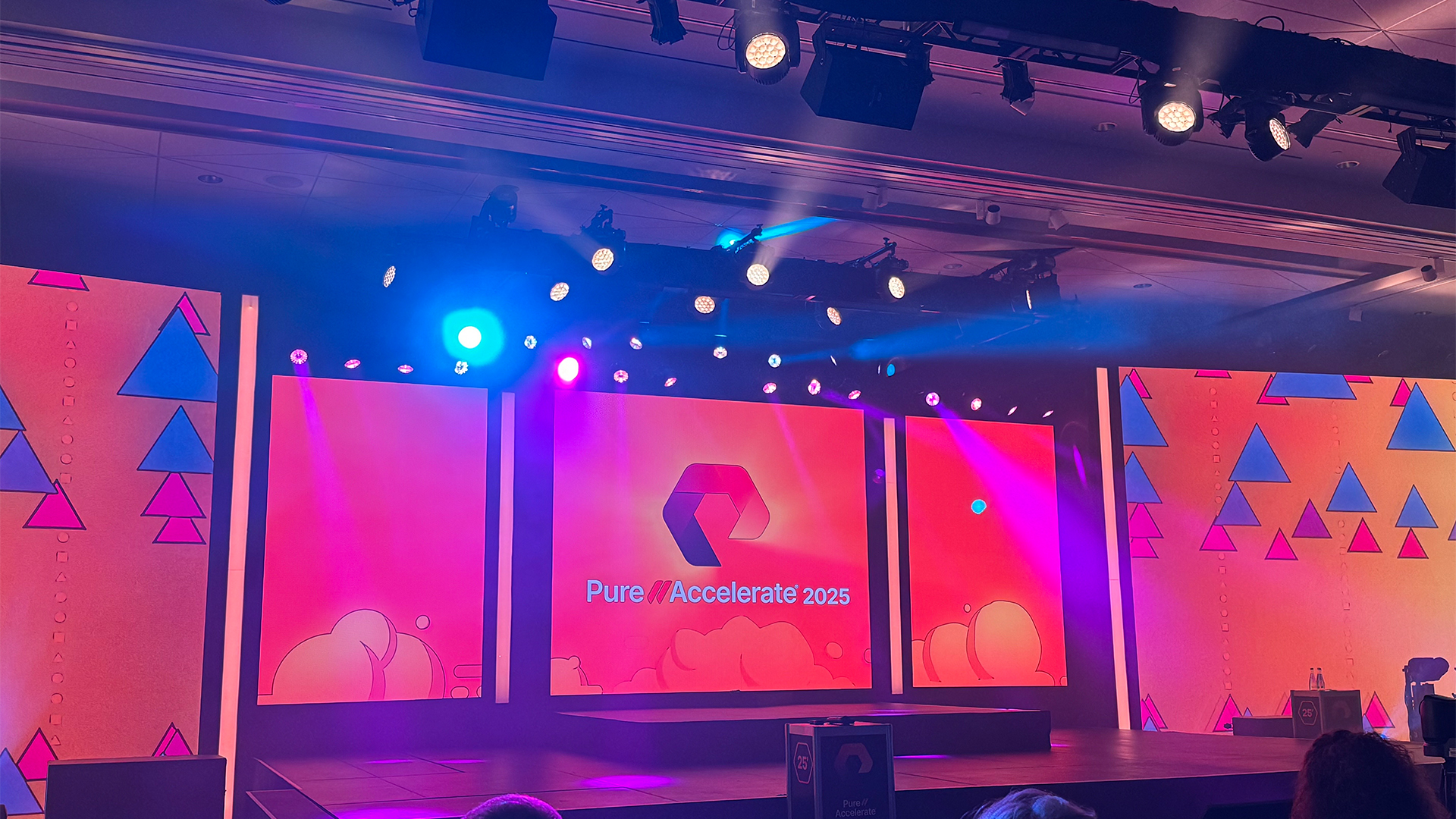Pure Storage’s big headline announcement this week is the launch of its Enterprise Data Cloud (EDC), and one senior company figure told ITPro it’s a key differentiator for the company.
The new strategy is the culmination of more than a decade of ecosystem building for the storage giant, combining high-performance all-flash storage with a software portfolio aimed at simplifying operations with a dash of automation.
As I’ve mentioned previously, it’s a familiar approach that bears some resemblance to NetApp’s. The company has its Data Fabric, a unified data storage and management solution. Last year, the firm also announced a rebrand aimed at streamlining storage, enterprise data, and AI platforms.
With this, NetApp framed itself as the go-to provider for ‘intelligent data infrastructure’ in a similar manner to what we’ve seen at Pure//Accelerate this week.
But one senior Pure Storage figure thinks comparisons are a disservice to what the company has achieved with EDC. During a press briefing ahead of the conference, a question over whether this represented “old wine with a new label” was met with a rather strong pushback by Prakash Darji, general manager at Pure Storage’s digital experience business unit.
Darji, and Pure as a whole, are keen to emphasize that this is an entirely different animal. The EDC acts as a ‘cloud-like’ system which allows enterprises to scale storage capabilities in a public cloud-style manner while providing more intuitive, automated data management tools.
Key to this is the integrated ‘intelligent control plane’ and how it interacts with core services such as Pure1 and Pure Fusion, the latter of which now plays a key role in enabling customers to scale and optimize storage.
Combined with the company’s AI Copilot, which also supports storage optimization processes, and the EDC is about as close to ‘the cloud’ as you could get without actually using a hyperscaler, the company posits.
Speaking to ITPro, Darji admits that “not everything is new” with the EDC approach, but it’s a significant improvement on what’s out there in the market.
“I don’t think everything we’re saying in the EDC is new. This is not revolutionary, this is evolutionary for us,” he told ITPro.
“And frankly, some of the old wines are the best wines. So, like, playback the hits.”
In championing the new EDC strategy, Darji took a swipe at the aforementioned industry competitor, noting that the company has made a concerted effort to cultivate its storage and data management ecosystem in an organic manner over the last decade.
Simply put, Pure Storage has been boxing clever and quietly innovating while other industry players have used targeted acquisitions as a way to build out their solutions portfolios – particularly with regard to operating systems used for data management and storage.
“We didn’t grow through acquisitions,” he told ITPro. “If you look at anyone who’s gotten big in storage, they’ve acquired multiple operating systems to acquire market share.”
“Even NetApp with ONTAP and Data Fabric, go look at their object on ONTAP, it’s garbage,” Darji added.
“But one of the things that we have an advantage is we’ve organically built this as one operating system before you even get to EDC. That is who we are as a company, and if we didn’t do this, we wouldn’t be able to evolve to where we’re at.”
The problem with an acquisition-based approach is essentially that vendors are left with disparate operating systems that customers are forced to traverse, which Darji argued limits flexibility – a key talking point of the new EDC.
Pulling together a truly consolidated, unified data cloud has been attempted on multiple occasions, Darji added. But these have fallen flat. Notably, this has proven valuable for Pure Storage in refining its strategy.
“Viper from Dell, IBM, they all tried to do storage virtualization,” he noted. “ Luckily, we had the benefit of not being first. We saw every failed attempt. And we’re like, ‘let’s not do that’.”
Source link
